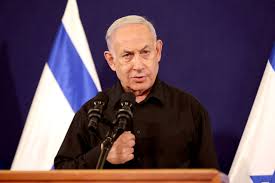
Washington (THE HILL): President Biden’s executive order setting the ambitious goal of having the government reach net-zero emissions by 2050 faces enormous challenges — including simply getting the entire federal workforce on board.
The order represents one of the most important efforts yet to reduce U.S. emissions amid growing fears the world is running out of time to prevent devastating changes from global warming.
The federal government is the largest single consumer of energy in the country, so getting its array of buildings and fleets of vehicles carbon-neutral in the next 30 years would be a massive achievement. It’s also one that climate groups, which prefer an even more ambitious timeframe, say the U.S. desperately needs to make. The problem is that getting the vast federal bureaucracy to change is difficult, and it will rely on thousands of government managers and workers doing their part even as they do their separate day-to-day work. “Tens of thousands of people — all busy, all under pressure — and their bosses tell them that what matters is how much money they spend, domestic content and small business. Now you want me to do sustainable too?” Steve Schooner, a professor of government procurement law at The George Washington University Law School, said in laying out the real-world challenges.
He noted that there aren’t any rules governing the sustainability directive yet — and the government’s staff hasn’t been trained.
This means new people will likely need to be hired as the government offers case studies and experiments with its proposals, and seeks new regulations to implement it.
“They haven’t even started the rulemaking process for that yet,” Schooner said. “It’ll probably take years…we’ll spend over a trillion dollars on procurement before that happens.” Not everyone is so dour on the prospects, however.
Jon Powers, the federal chief sustainability officer during the Obama administration, struck a more optimistic tone, saying that “in my conversations with folks in the agencies…they’ve all been waiting for this and are excited about getting to work on this.”
Some are predicting the government may need to ease up on its deadlines — in part because of problems outside government’s complete control, such as the supply chain crisis and the pandemic.
Arthur Wheaton, director of labor studies at Cornell University’s School of Industrial and Labor Relations, said the government is likely “going to have to be a little flexible on the deadlines” for vehicles in particular, “because anyone who’s trying to go buy a car these days, notice there’s not much on the lot.”
Wheaton said the building provisions are also likely to be logistically thorny. “They want to retrofit and do some renovations and add new sources of energy on 300,000 federally owned buildings, that may take a little while, especially since the construction industry is woefully understaffed,” Wheaton said. “We have the technology, but will we have the people available to do the work?”
Bill Snape, senior counsel for the Center for Biological Diversity, said the administration will face a challenge in preventing the government from complicating its work.
“The biggest obstacle that the administration may face right now is just sort of making sure the administrative arms and legs of the whole machinery run smoothly and quickly, and that we don’t get bogged down in some sort of long, confusing rulemaking escapade,” he told The Hill.
For example, he said, some of its provisions, such as the electric-vehicle aspect, could likely be accomplished without even the need for an executive order.
“I can see why they want to be cautious and do it by rule, but it’s arguable that they’ve got some authority right now to pin it on things they’re already purchasing and just purchase the greenest version thereof,” he said.
The executive order was issued against the backdrop of a major U.S. Postal Service vehicles contract. Postmaster General Louis DeJoy said in February that about 10 percent of the vehicles the department was buying would be electric.
While Biden only has limited influence over the postal service, which is governed by a nine-member board, Schooner argued that Biden should ask the office not to buy the vehicles.
There are challenges with the order that don’t have anything to do with government workers, such as the political threat that a future administration might simply undo Biden’s order. Wheaton said Biden needs to make it more difficult for a subsequent administration to weaken the order. “A new president, depending on who it could be, could certainly make big changes, but the more you could put in contracts, the more you could put in confirmed orders, the more likely we’ll go through some of the next three years they can get Congress to approve the funding for those replaced vehicles, the better off [the administration is] going to be able to achieve their goal by that period of time,” he said.
Wheaton said that even if the country has a new president in 2025, benefits of some of the sustainable purchases will be locked in for several years.
“On buying the electric car, the hard part is putting up the money up front,” he said. “The long-term payout is good and for buildings it’s especially true so that if you go to a renewable source such as solar panels or wind or geothermal since they own the land, you can get a lot of bang for your buck.”
The post Biden’s big climate goal faces challenge with federal workforce appeared first on The Frontier Post.






